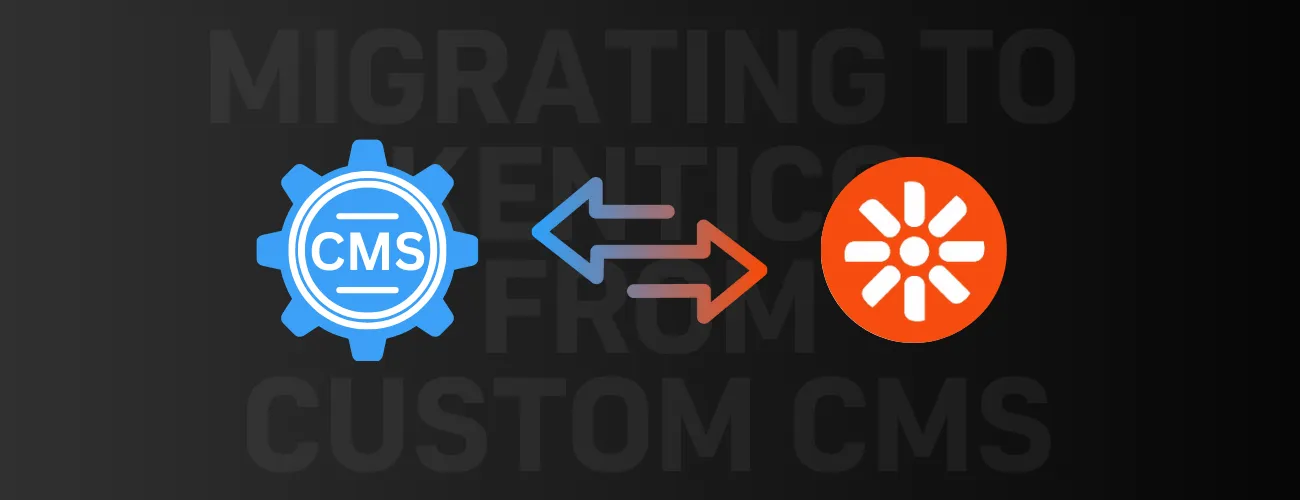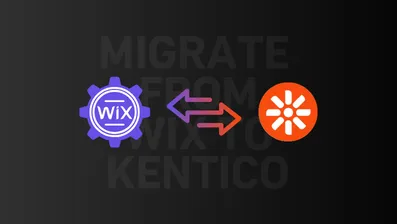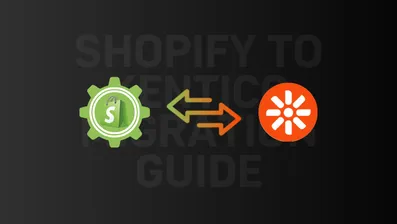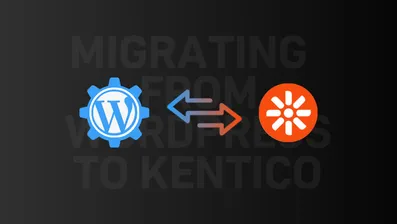If your business is running on a custom CMS, you might already be feeling the strain. Over time, your system may become outdated or struggle to keep up with modern needs.
That’s where Kentico comes in. It’s a platform designed for growth, flexibility, and speed. Moving from a custom CMS to Kentico isn’t just about upgrading your website. It’s about future-proofing your digital experience, improving efficiency, and delivering more to your users.
So, why should you consider making the switch? For starters, Kentico offers an intuitive interface that makes managing your website much easier. It integrates with other systems seamlessly, helping you optimize workflows and provide a better user experience.
If your current CMS is causing headaches, or simply no longer supports your evolving needs, transitioning to Kentico might just be the smart move you’ve been waiting for.
Why Migrate to Kentico?
Let’s face it, sticking with an outdated system can leave your business lagging behind.
So, why settle for something that doesn’t support your growth when Kentico can do so much more?
Kentico is built for modern businesses.
It provides a comprehensive content management system (CMS) that streamlines your workflows and enhances the overall user experience.
Whether you need to create multi-channel content, manage your online store, or simply enhance your marketing efforts, Kentico offers the tools that let you scale without limits.
What makes Kentico stand out?
It’s all about flexibility. The platform allows you to adapt quickly to changing business needs, while still providing a solid foundation for your digital strategy.
You get a powerful CMS, with integrated marketing and e-commerce tools, all within one solution.
Isn’t it time to leave the limitations of your old CMS behind and step into something more robust and future-ready?
Kentico’s capabilities are tailored to support the long-term growth of your business.
Challenges in Migrating from Custom CMS to Kentico
Migrating from a custom CMS to Kentico is no walk in the park.
It's more like a delicate dance, balancing between old systems and new possibilities.
But don't worry – while there are hurdles, they’re not insurmountable.
Challenge 1. Data Migration
One of the biggest challenges you’ll face is migrating your data.
Whether it's content, media, or customer data, ensuring everything transitions smoothly without losing integrity is key.
Often, custom systems don't have the same structure as Kentico, making data mapping and migration a complex task.
But with careful planning and the right expertise, this can be managed efficiently.
Challenge 2. Compatibility Issues
Custom CMS systems were built to meet specific needs at the time.
They may not play well with modern platforms like Kentico. This could lead to issues with integrations or custom functionalities that need to be recreated in Kentico.
It’s important to conduct thorough testing to ensure everything works as expected post-migration.
Challenge 3. Training and Familiarization
Another hurdle is getting your team up to speed with Kentico’s interface and functionality.
Custom CMS platforms often have unique workflows, so the learning curve can be steep for your team.
However, with proper training, they can quickly adapt to the user-friendly interface of Kentico and start making the most of its features.
While there are challenges to face, understanding them upfront will help ensure a smoother transition to Kentico.
Key Steps in the Migration Process
Migrating from a custom CMS to Kentico isn’t something that happens overnight.
But with a clear plan, you can break down the process into manageable steps.
Let’s take a look at how you can make the transition as smooth as possible.
Step 1: Planning and Strategy
Before diving in, it's crucial to assess your current CMS and define your goals for the migration.
This is where you’ll outline the objectives - whether it’s improving user experience, enhancing scalability, or integrating new marketing tools.
Planning at this stage helps ensure that everyone’s on the same page.
Step 2: Content Mapping and Migration
Once the strategy is in place, you’ll need to map out the content structure from your old CMS to Kentico.
This involves transferring data, including articles, media, and customer data, while keeping SEO practices in mind.
Ensure that all metadata, URLs, and internal links are properly migrated to avoid broken links or SEO setbacks.
Step 3: Custom Development and Integration
Your custom CMS may have unique features or third-party integrations that need to be replicated in Kentico.
This is the time to develop custom Kentico modules, ensuring the new system aligns with your business needs.
Testing each integration is key to making sure everything works together seamlessly.
Step 4: Testing and Quality Assurance
No migration is complete without thorough testing.
This stage involves checking everything—content accuracy, functionality, performance, and user experience.
Test the website's responsiveness, check forms, and make sure all integrations are functioning properly before moving forward.
Step 5: Launch and Ongoing Support
Once everything is tested and ready, it's time to launch.
But the process doesn’t end there. Post-launch monitoring and ongoing support will help you address any minor issues and ensure that your Kentico platform continues to perform at its best.
By following these steps, you’ll be able to transition your legacy CMS to Kentico without unnecessary stress or setbacks.
Kentico Features That Enhance the CMS Experience
When migrating to Kentico, you’re not just moving to a new system – you’re unlocking a treasure trove of powerful features designed to elevate your digital presence.
1. Integrated Marketing Solutions
One of the standout features of Kentico is its integrated marketing tools.
From email marketing automation to analytics and lead scoring, Kentico provides everything you need to attract, nurture, and convert leads.
These features help you create personalized experiences for your users, ensuring that your marketing efforts are aligned with your business goals.
2. E-commerce Capabilities
If you’re running an online store, Kentico’s e-commerce module is a game-changer.
With Kentico, you can manage products, process transactions, and offer a smooth shopping experience all in one place.
Plus, its flexible design means you can easily customize the store’s look and functionality to fit your brand’s needs.
3. Scalability
Kentico is built with scalability in mind.
As your business grows, the platform can grow with you.
Whether you’re managing thousands of pages, products, or users, Kentico’s architecture is designed to handle increasing demands without compromising performance.
4. Multi-channel Capabilities
Reaching your audience across multiple channels is essential.
Kentico allows you to create and deliver content seamlessly across web, mobile, social media, and email.
This multi-channel functionality ensures that your users have a consistent experience no matter where they interact with your brand.
5. Personalization
Kentico’s advanced personalization features allow you to tailor content to each user based on their behavior and preferences.
Whether you’re serving up personalized product recommendations or dynamic content, Kentico makes it easy to create a customized experience for your visitors.
These features make Kentico a highly effective and versatile platform for businesses that want to not only manage content but also optimize the entire customer journey.
Best Practices for a Smooth CMS Migration
Migrating to Kentico doesn’t have to be a headache if you follow these best practices.
Here are a few tips to ensure that your CMS transition is as smooth as possible:
► Start with a Solid Plan
Planning is the foundation of any successful migration.
Take the time to understand your current CMS setup and map out a clear roadmap for the migration process.
Involve all relevant stakeholders from the start to ensure that all business requirements are met and that the project stays on track.
► Clean Your Data
Before transferring anything to Kentico, it’s essential to clean your data.
Review your content for relevance, quality, and accuracy.
Removing outdated or irrelevant content will not only streamline the migration process but also help your website’s SEO once everything is transferred.
► Work with a Kentico Development Company
While Kentico is user-friendly, having an expert on your side can make a huge difference.
Partnering with a Kentico development company ensures that your migration is done right the first time.
Experts can help you address any technical challenges, integrate third-party systems, and customize Kentico to meet your specific needs.
► Prioritize User Experience
Migrating to Kentico is a great opportunity to improve the user experience.
Use this time to review your website’s design, navigation, and functionality. A smooth user experience will keep visitors engaged and help maintain search rankings.
Take into account mobile-friendliness, site speed, and accessibility as you make improvements.
► Test, Test, Test
Thorough testing is a critical step in the migration process.
Test all features and functionality thoroughly before you go live. This includes testing content accuracy, user flows, integrations, and performance across different browsers and devices.
Catching issues early helps avoid post-launch headaches.
By following these best practices, you can reduce risks and ensure that your Kentico migration is as seamless as possible.
Kentico Development Company: Helping You Make the Transition
Migrating to Kentico doesn’t have to be daunting when you work with the right team.
At DotStark, we specialize in helping businesses like yours transition smoothly from a custom CMS to Kentico.
Our team of experts is here to guide you through every step of the migration process, ensuring your data is transferred seamlessly, your integrations work flawlessly, and your new CMS is fully optimized to meet your needs.
We understand that every business is unique, which is why we tailor our Kentico migration services to suit your specific requirements.
Whether you’re moving e-commerce features, marketing tools, or simply enhancing your content management system, DotStark’s Kentico development company can handle it all.
Conclusion
Migrating from a custom CMS to Kentico is a strategic move that can help your business stay competitive in an ever-evolving digital landscape. With its powerful features, flexibility, and scalability, Kentico offers everything you need to elevate your content management, marketing, and e-commerce strategies.
Though the migration process can come with its challenges, the benefits of moving to a modern, integrated platform like Kentico are undeniable. By following best practices, cleaning your data, working with the right experts, and prioritizing user experience, you can ensure a smooth transition that sets your business up for long-term success.
Ready to take the leap and modernize your CMS? DotStark is here to guide you every step of the way, providing expert Kentico migration services to make your transition seamless and efficient. Let us help you unlock the full potential of Kentico!
Frequently Asked Questions
The timeline for migrating to Kentico varies depending on the complexity of your current CMS and the amount of data to be transferred. Generally, the process can take anywhere from a few weeks to several months. A detailed plan and careful execution can help speed up the process and ensure everything is transferred smoothly.
While Kentico is user-friendly, working with a Kentico development company ensures that your migration is done efficiently and without unexpected issues. Experts can help with custom development, integrations, data mapping, and quality assurance, making the migration process seamless and reducing risks.
If done correctly, migrating to Kentico shouldn’t negatively impact your content or SEO. Proper planning, testing, and a focus on maintaining URL structures, meta tags, and redirects can help protect your SEO rankings. It’s important to clean and organize your content before migration to ensure everything is properly transferred.
Kentico supports a wide range of third-party integrations. However, some custom integrations may need to be adjusted or reconfigured during the migration process. Working with a Kentico development company ensures that your integrations are smoothly transferred and fully functional on the new platform.
After migration, your ongoing costs will depend on your website's size and complexity. Kentico offers a subscription-based model, which includes hosting, licensing, and support. Additionally, you may incur costs for ongoing updates, custom development, or third-party integrations. It’s essential to plan for these costs to keep your Kentico CMS running efficiently.













 +91 9680599916
+91 9680599916
 vanshika@dotstark.com
vanshika@dotstark.com
